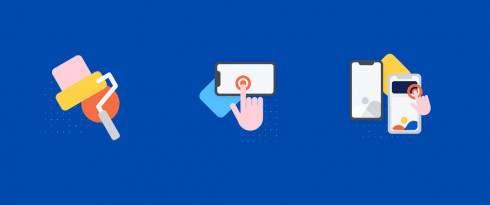In the world of technology, everything has gone online, no matter either you want to buy anything for domestic purpose or for your professional need, a single click can bring it there right next to you. We can say that ecommerce business has brought a lot on the table by offering the services of online selling and purchasing. This way, business websites are getting ultimate benefit of marketing. Unlike the previous ancient time, now you don’t have to go door to door for selling your product. The right marketing tools perform the same role for you with a little effort that you need to put here. When a business site is made and run online, Google provides the quality enhancing tools to make the experience of users better in the form of Google Web Vitals Practices.
Google Web Vitals is an initiative taken by Google to define a common set of signals that may help the users as far the quality of user experience on business website is concerned. One big goal of this initiative is to make it easier for the owners of the websites to measure their site’s performance. It doesn’t matter if they don’t have the vast experience in performance engineering, Google web vitals practices can perform the experience better without putting you in trouble. The Web Vitals Initiative is comprised of:
- A collection of metrics, known as Web Vitals, that ensure the activities and interactions that often affect user experience.
- A set of tools that simplify the procedure and quality of measuring Web Vitals.
- The commitment of providing the Web Vitals via most popular and important Google tools.
What are Google Web Vitals Practices?
There are some Web Vitals that can be measured:
- Largest Contentful Paint which is known as LCP
- Cumulative Layout Shift which is known as CLS
- Time to First Byte which is known as TTFB
- First Input Delay which is known as FID
- First Contentful Paint which is known as FCP
Out of above mentioned Google Web Vitals Practices, FID, CLS and LCP are considered Core Web Vitals. These are aimed to apply to every web page regardless of how these webpages are built. The main purpose is to consider various types of web pages. These are real-world measures that Google looks at, which respond to things like: How fast does the page load? What is the speed of interaction? Which speed it is stable at (how fast)? So basically, when people (visitors or users) use your web page on a device like mobile phone or desktop (computer), it determines their experience regarding speed and interaction, etc. Here we will see how each Core Web Vital is applied to the single page apps that are called as SPAs.

First Input Delay (FID):
First Input Delay measures the rapidity with which a page responds to the first interaction of a user. Other Web vitals focus on the speed at which a person who we say ‘a user’ sees something on the screen, but this (First Input Delay) focuses on the initial interaction with the page and what the user understands. It works in a way that measures the time between the first click (when the user clicks for the first time) or when the user taps on a page to the time when the browser becomes able to start and handles the resultant event, but not how long it takes (how much time it needs to be in action) for the application to do what it must have in the scenario when event is raised.
Cumulative Layout Shift (CLS):
According to a dissertation help firm, the cumulative shift in layout quantifies a web page’s visual stability. One of the most relevant examples of page layout changes affecting the user experience is related to ads. Most of the users read the content on a webpage for the purpose of shifting down the text and sometimes it is to be done even off screen as ads are there into the pages where they are loaded and inserted. This type of user experience is not so smooth and Cumulative Layout Shift aims to measure such uncomfortable experience of the user.
CLS scores start at 0. The original CLS notation algorithm increased CLS as the items moved through the viewport to the next page load event. This algorithm may have led to unreasonably high Cumulative Layout Shift scores for both long-term pages and single-page applications. Think about a one-page application with client-side routing. Each route change shows the new content. This is the expected behaviour, but the Cumulative Layout Shift score keeps growing.
Largest Contentful Paint (LCP):
The largest Contentful Paint measures the loading time of the primary content of a page. The idea is that a user perceives through a connection between the speed at which a website loads itself and by the speed at which the main content of the page becomes visible. When the main content is loaded and visible, the user observes that the page has been loaded even though smaller device elements can still be loaded lately.
The main content of the page is determined by identifying the largest picture or text box visible in the viewport of navigator. There are different options regarding it. The box can be a picture, a video, a box element containing text, or even a background image that is uploaded via CSS. Google Web Vitals Practices are the best way that developers have for measuring the quality of experience on the web, but we can’t take them as perfect ones because for improving the quality. additions must be expected.
When we talk about Google Web Vitals Practices, the Core Web Vitals are prominent as far the relevancy to all web pages across relevant Google tools is concerned. When these metrics are to be changed, they have widespread impact, for example, developers should expect the intensity and definition of the Core Web Vitals to be stable and to be updated for having a prior notice and an annual meter that is predictable. Other Web Vitals are usually context specific as well as tool specif. They can be more experimental than the Core Web Vitals. To understand this, we can say that their definitions and intensity can be changed with the greater frequency.

